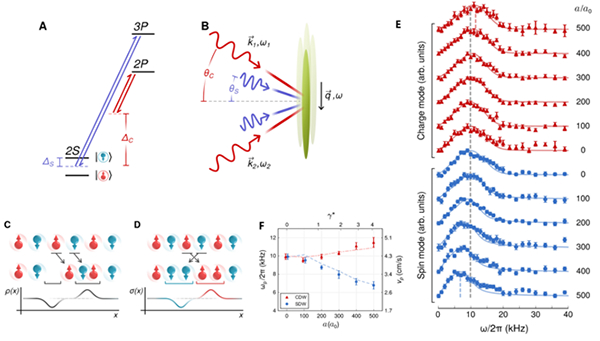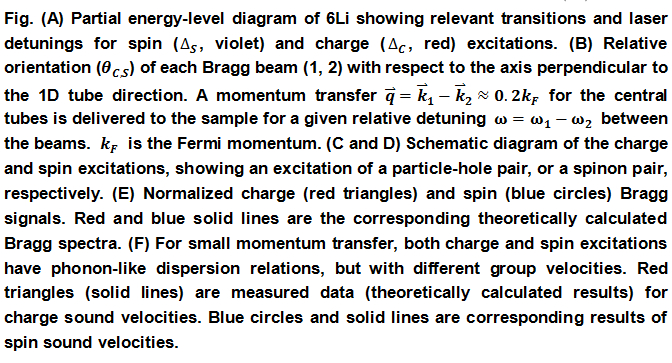Supported by the National Natural Science Foundation of China (Grant No. 12134015, 11874393, 12121004), the research team led by Prof. GUAN Xiwen from the Innovation Academy for Precision Measurement Science and Technology (APM) of the Chinese Academy of Sciences (CAS), in collaboration with the research teams led by Prof. Randy Hulet and Prof. PU Han from Rice University of the US, has observed spin-charge separation in the trapped one dimensional (1D) ultracold Fermi gas. The results were published in Science on June 17, 2022, entitled “Spin-charge separation in a 1D Fermi gas with tunable interactions”.
Here’s the link to the article: http://www.science.org/doi/epdf/10.1126/science.abn1719.
Their research was highlighted at http://www.science.org/doi/10.1126/science.add4298.
Complicated interparticle interactions and rich internal degrees of freedom usually pose big challenges to describe the physical properties of a quantum system. The Tomonaga-Luttinger liquid (TLL) theory is commonly adopted to describe the universal low-energy behavior of 1D quantum many-body systems. Low-energy excitations of 1D interacting fermions typically split into two independent TLLs, each of which describes collective motions of fractional quasiparticles carrying either spin or charge degrees of freedom. This phenomenon is called spin-charge separation—a hallmark of 1D many-body physics. Although there have been more than 40 years of research in this field and evidence for spin-charge separation has been reported in 1D solid-state materials, there’s a lack of conclusive experimental observation of this phenomenon before this study. Theoretical characterization of spin-charge separation and the related experimental manipulation methods remain unsolved challenges.
This international team began their collaboration in 2018. Through the exact solution of the Yang-Gaudin model of 1D interacting Fermi gases, they found that in the long wavelength limit, fractional quasiparticles (spinons) in the spin degree of freedom, and particle-hole collective excitations in the charge degrees of freedom, perfectly split into separated spin and charge density waves and tested their Dynamic Structure Factor (DSF) through Bragg beams. Based on this work, they used Bragg beams to excite spin and charge density waves separately and measured the corresponding spin and charge Bragg spectra at different interacting strengths (Fig. A-E). Peaks of the Bragg spectra give the corresponding spin and charge sound velocities (Fig. F). Theoretically, density distributions in 1D tubes were obtained from complicated 3D particle number distributions. Exact spin and charge DSFs were further calculated through the Yang-Gaudin model of 1D interacting Fermi gases and TLL theory. By taking into account the curvature correction to the linear charge excitation spectrum and the nonlinear effect of the spin backward scattering in the spin sector, theoretical and experimental results are in good agreement.
This work, for the first time, experimentally verifies the TLL theory of the spin-charge separation and provides strong evidence for nonlinear TLL effects beyond the TLL model. It is a paradigmatic example of quantum many-body physics, offering new insight into quantum physics.



Add: 83 Shuangqing Rd., Haidian District, Beijing, China
Postcode: 100085
Tel: 86-10-62327001
Fax: 86-10-62327004
E-mail: bic@donnasnhdiary.org
京ICP备05002826号 文保网安备1101080035号 Copyright 2017 NSFC, All Right Reserved